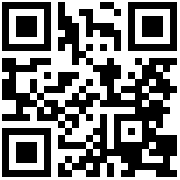1.Pumps in series
The series connection of pumps mainly solves the problem of insufficient head. After the water pumps are connected in series, the flow rate remains unchanged, and the head is the sum of the two pumps. In practice, in order to avoid insufficient water intake from the downstream pump to the upstream pump, the flow rate of the downstream pump is usually adjusted to the optimum state to ensure sufficient water intake to the upstream pump.
系列操作,出口压力的n-1th pump (for long-distance series connection, the loss between the pumps needs to be subtracted) is the inlet pressure of the nth pump, so for the pressure bearing, bearing and shaft seal of the series pumps It must be required, otherwise it will cause the shell to break, the shaft seal to be damaged, and the bearing to heat up.
As in the case of paralleling, turning off one or more of the pumps will also change the operating conditions of the remaining pumps.
2.Parallel connection of pumps
Parallel connection of pumps means that multiple pumps share one outlet pipe. Each pump has individual check valves. After the pumps are operated in parallel, the flow rate under the same head is added. That is: Q and = Q pump 1 + Q pump 2 + Q pump 3 + ... + Q pump n

Features of pumps working in parallel:
①The water supply can be increased, and the flow in the main water delivery pipe is equal to the sum of the water output of each parallel pump;
②流量和头脑d of the pump station can be adjusted by starting and stopping the number of pumps to achieve the purpose of energy saving and safe water supply. For example: when designing a water intake pumping station, the flow is considered according to the maximum daily average hourly flow in the city, and the head is considered according to the dry water level in the river. Therefore, in actual operation, due to changes in the water level of the river and changes in the water consumption in the urban pipe network, etc., it will inevitably involve the adjustment of the start and stop of the water intake pumping station unit. In addition, it is even more necessary to adjust the start and stop of the unit of the water pumping station;
③Water pump When one of the pumps working in parallel is damaged, the other pumps can continue to supply water. Therefore, the parallel connection of pumps improves the flexibility of pump station operation scheduling and the reliability of water supply, and is the most common in pump stations. a mode of operation.
In an ideal state, the relationship between the flow rate and the head of two pumps of the same model and specification is: When connected in series: Q=Q1+Q2 H=H1+H2 From the above two formulas, when two or more pumps are connected in series The flow does not change greatly but the head superimposes.
When connected in parallel: Q=Q1=Q2 H=H1=H2 That is, when two or more pumps are connected in parallel, the head of the system does not change much, but the flow is superimposed. The series connection of water pumps is often used to pressurize the water supply pipe network, and the pressurization pumping station of the outdoor water supply pipe network adopts the water pump series connection method. Parallel connection of water pumps is often used when a single water pump cannot meet the flow requirements, or when selecting a single water pump with too large system flow will increase the operating cost. Parallel connection can adjust the number of pumps to be turned on according to the amount of water consumption and peak water consumption, reducing operating costs. The circulating water pumps in the heating system are often connected in parallel to meet the flow requirements, and the backup pumps are also connected in parallel.




QR Code
